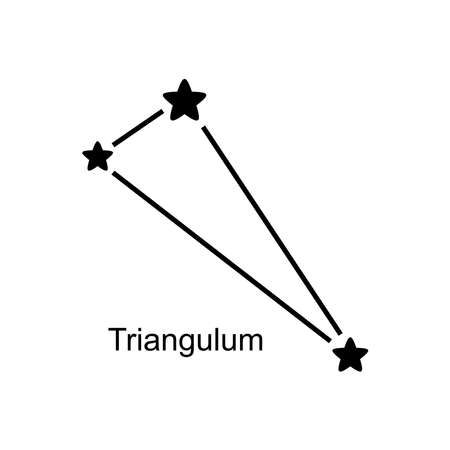Introduction: Stonehenge as a British Cultural Icon
Stonehenge, rising from the Salisbury Plain with an austere majesty, is more than a mere relic of ancient engineering—it is a living symbol woven into the fabric of British heritage. For centuries, this enigmatic monument has occupied a singular position in the national consciousness, its weathered sarsens and bluestones standing sentinel over shifting ages and civilisations. The persistent intrigue surrounding Stonehenge is not merely architectural; it embodies a bridge between past and present, myth and science, inviting speculation about its original purpose and the people who constructed it. As one contemplates its silhouette at dawn or under the solstice sun, Stonehenge’s enduring presence in southern England serves as both a geographical landmark and a cultural touchstone—a site where history, legend, and the celestial order converge in the heart of Britain’s landscape.
2. Historical Context and Construction of Stonehenge
Stonehenge stands as a remarkable testament to the ingenuity and cosmological awareness of Neolithic Britain. Situated on Salisbury Plain in Wiltshire, its origins are traced back to approximately 3000 BCE, during an era when communal monument building flourished across the British Isles. The construction of Stonehenge unfolded in several phases, each reflecting evolving social structures, technological advancements, and possibly shifting ritualistic purposes.
The Builders and Their Methods
While the precise identities of Stonehenge’s builders remain shrouded in mystery, archaeological evidence suggests that various groups contributed to its creation over centuries. Early theories attributed its construction to Druids or Romans; however, contemporary scholarship places its inception well before either group’s prominence. Instead, it is now widely accepted that indigenous Neolithic peoples—skilled in both engineering and astronomical observation—were responsible for transporting and erecting the monument’s massive sarsen stones and bluestones.
Key Phases of Construction
| Phase | Approximate Date | Main Features |
|---|---|---|
| Earthwork Enclosure | c. 3000 BCE | Circular ditch and bank, Aubrey holes |
| Early Stone Setting | c. 2500 BCE | Bluestones arranged in a double arc |
| Sarsen Circle & Trilithons | c. 2400–2200 BCE | Larger sarsen stones erected in circles and horseshoe formation |
| Later Adjustments | Post-2200 BCE | Rearrangement of bluestones, additional features added |
Significance within British Prehistory
Stonehenge’s significance extends far beyond its iconic silhouette. It forms part of a broader landscape of Neolithic and Bronze Age monuments, including barrows, cursus monuments, and avenues that collectively embody the spiritual and astronomical preoccupations of prehistoric Britons. Its meticulous alignment with celestial events—most notably the summer solstice sunrise—underscores a sophisticated understanding of astronomy long before written history. In the context of British heritage, Stonehenge remains not only an enduring architectural marvel but also a focal point for debates about ancient cosmology, social organisation, and the transmission of cultural memory.

3. Celestial Alignments: Evidence and Interpretations
Stonehenge’s enduring fascination is inextricably linked to its extraordinary celestial alignments, particularly those involving the summer and winter solstices, as well as key lunar cycles. The most striking evidence lies in the monument’s axis, which is aligned with remarkable precision towards the point on the horizon where the sun rises during the summer solstice and sets during the winter solstice. This alignment, observed through the Heel Stone and central Altar Stone, suggests a deliberate architectural intent rather than mere happenstance.
Solar Phenomena: Solstice Alignments
Archaeological surveys using modern techniques such as GPS mapping and computer modelling have confirmed that the main avenue leading into Stonehenge frames the midsummer sunrise and midwinter sunset with uncanny accuracy. This solar orientation would have been significant for Neolithic communities, marking times of seasonal transition vital for agricultural cycles. The gathering of people at Stonehenge during these solstices—an enduring tradition to this day—attests to its role as a solar observatory rooted in ritualistic practice.
Lunar Cycles: The Enigma of the Stones
Beyond solar events, attention has turned to potential lunar alignments embedded within the layout. Some researchers propose that features such as the Station Stones may encode complex knowledge of the 18.6-year lunar standstill cycle—a phenomenon where the moon reaches extreme points in its rising and setting positions. These interpretations are supported by statistical analyses comparing stone placements to predicted lunar risings and settings, suggesting that Stonehenge may have served as an ancient tool for tracking both solar and lunar calendars.
Methodologies of Discovery
The methodologies employed to uncover these alignments combine traditional fieldwork with cutting-edge technology. Surveyors use satellite imagery, laser scanning, and archaeoastronomical software to reconstruct how Stonehenge would have appeared at different epochs, accounting for changes in Earth’s axial tilt over millennia. Ethnographic comparisons with other prehistoric monuments across Britain further contextualise these findings, revealing a landscape-wide engagement with celestial phenomena. Thus, Stonehenge emerges not merely as a static monument but as an instrument attuned to the rhythms of sky and season.
4. Astrological Beliefs and Ritual Practices
The enigmatic landscape of Stonehenge invites speculation not only about its astronomical purpose, but also its rich astrological resonance within the worldview of its ancient builders. While modern distinctions between astronomy and astrology are sharply drawn, for Neolithic and Bronze Age communities these domains were inseparable; celestial observations were imbued with symbolic meaning, guiding both daily life and spiritual practice.
Astrological Interpretations of Celestial Phenomena
It is plausible that the alignment of Stonehenge with solar and lunar events—most notably the summer solstice sunrise and winter solstice sunset—was perceived as more than a practical calendar. The regularity of these phenomena may have been interpreted as messages from the cosmos, portents influencing communal decisions, agricultural cycles, or even the fate of individuals. The following table illustrates possible correspondences:
| Celestial Event | Astrological Meaning (Hypothetical) | Potential Ritual Response |
|---|---|---|
| Summer Solstice Sunrise | Renewal, fertility, divine favour | Offerings, communal feasts, rites of passage |
| Winter Solstice Sunset | Rebirth, protection from darkness | Lighting of fires, invocation rituals, ancestor veneration |
| Lunar Standstill | Change, transition, communication with spirits | Meditative ceremonies, divination practices |
Ritual Functions Embedded in Stonehenges Architecture
The very construction of Stonehenge appears to encode ritual significance. The avenue leading from the monument aligns with the midsummer sunrise, suggesting processional routes for ceremonial gatherings. The concentric arrangement of sarsen stones and bluestones may have delineated sacred zones for different ritual functions or social strata. Such spatial organisation implies a choreography of movement and observance intimately connected to celestial patterns.
A Nexus for Community and Cosmos
In this context, Stonehenge was likely more than a passive observatory—it was a living nexus where sky and earth converged through ritual action. Seasonal gatherings at Stonehenge would have reinforced cosmic order and social cohesion alike, binding participants to cycles of nature through acts both solemn and celebratory. Thus, the enduring legacy of Stonehenge resides not only in its stones but in the invisible web of meaning spun between humanity and the heavens.
5. Modern Reflections: Legacy and Continued Fascination
Stonehenge stands today not only as a monument of ancient ingenuity but also as a living symbol woven into the fabric of contemporary British society. Its enduring presence exerts a profound influence that transcends its prehistoric origins, inviting both scholarly inquiry and public fascination. In academic circles, Stonehenge is the subject of rigorous investigation, its celestial alignments meticulously charted by astronomers and archaeologists alike, who seek to decode the intentions of its builders and their relationship with the cosmos. Such research has propelled the monument to the forefront of archaeoastronomy, positioning it as a keystone in our understanding of how early societies interpreted the heavens.
Beyond academia, Stonehenge pulses with life during key moments in the calendar—most notably at the summer and winter solstices. These gatherings, often marked by a harmonious blend of reverence and festivity, draw thousands who assemble before dawn to witness the sun’s rays piercing through ancient stones in an awe-inspiring spectacle. For many, these events are more than mere re-enactments; they represent a powerful continuity between past and present, where scientific precision meets spiritual yearning. The rituals observed at Stonehenge today echo those presumed to have been conducted millennia ago, yet they are also infused with modern sensibilities—embracing inclusivity, environmental awareness, and communal celebration.
Stonehenge’s unique position bridges seemingly disparate domains: science and spirituality, tradition and innovation. As a focal point for both secular scholarship and mystical interpretation, it challenges us to reconsider the boundaries between empirical knowledge and cultural meaning. The monument has become a touchstone for British identity—a place where national heritage is not merely preserved but actively reimagined. Educational programmes, artistic expressions, and media representations all draw upon Stonehenge’s enigmatic allure, ensuring its relevance for successive generations.
In an era marked by rapid technological change and shifting cultural landscapes, Stonehenge endures as a steadfast emblem of Britain’s dialogue with its ancient past. It invites reflection on humanity’s perennial quest to find order in the cosmos and meaning in ritual. Whether approached through the lens of astronomy or astrology, science or ceremony, Stonehenge continues to inspire curiosity, contemplation, and collective pride—a testament to its power as both relic and beacon within the national consciousness.


